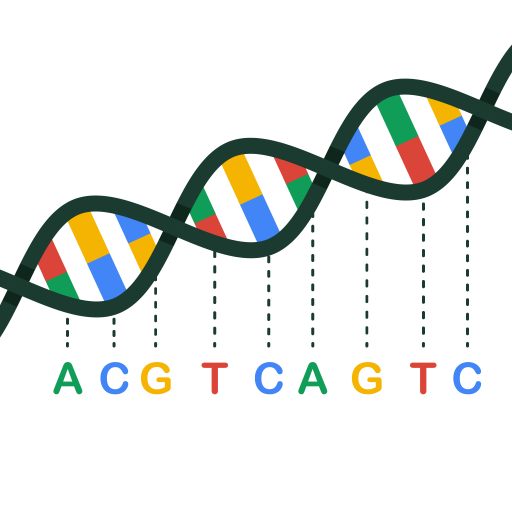The human body is formed in complex and profound ways. Its basic composition is identical, but each person is unique. Let us explore the world of genomics together and get to know more about how intricate the human body is.
What is DNA?
Deoxyribonucleic acid, or DNA in short, is a substance that exists in our human cells. Its structure consists of two long spiral chains (as shown below), on which four types of bases, which can be thought of like English letters: adenine (A), thymine (T), cytosine (C) , and guanine (G), serve as the basic unit of DNA. Our body relies on the order, or sequence, of these DNA bases on the chain to carry genetic information. This is similar to how we communicate in English by using the 26 letters in the alphabet to form words and sentences to convey different meanings.

What is a gene?
A gene is a segment of DNA that serves as the basic unit of instruction for building our body’s observable traits and functions.
The DNA bases are linked together in a chain to form a DNA strand. Only certain sections of the chain contain genetic instructions to build our body’s observable traits and functions. By analogy, a gene is like a complete sentence or paragraph, which conveys particular meaning.
What is a genome?
A “genome” refers to the entire set of genetic materials in a living thing. For every human being, the genome includes over 20,000 genes. Each of us has our own unique genome, which can be thought of as an operation manual for our body. It provides instructions that help to determine physical characteristics of our body such as skin colour, height and potential risks of developing different diseases.
If we think of the DNA bases as letters of the English alphabet, a gene is like a complete sentence or paragraph, and the genome is like the whole instruction manual – including all the chapters, paragraphs, sentences, graphics and even typesetting.
If we were to compare the genomes of two persons who are not related by blood, 99.9% of their genomes would be the same and only 0.1% of them would be different. However small this 0.1% might look like, it is significant enough to represent millions of differences in the two DNA sequences, accounting for each person’s unique physical characteristics.
| Genome | English |
|---|---|

DNA bases: A, T, C and G |

English alphabet |

The four bases are connected in a long DNA chain. Genes are segments of the DNA chain that carry specific genetic instructions for the body. |

Letters can be combined to form complete sentences or paragraphs, to convey a specific message. |
|
All DNA in the human body, including every gene and DNA base, are collectively called the genome. |
All the essays, paragraphs and sentences come together to form a whole book. |


